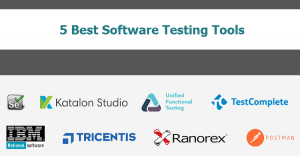Training and Development is an essential practice for any organization. It helps firms to enhance employee performance and track their productivity. It is expected of training interventions to bring forth productive results for the organization’s goals. Developing the knowledge base of employees, skill enhancement, human resource utility and teaching of new concepts and ideas are the kind of engagements that are included in it.
However, this intervention in itself is a rather expensive investment. The resources, time and capital that goes into organizing and conducting training sessions compromise with the working hours of the employees. It is due to such reasons that HR managers analyze training and development on the level of the organization, employee and the work that it addresses. Such analysis provides insight into the requirements of the firm, the employee and the work itself with respect to skills, ideas, concepts etc. All in all the biggest result that the assessment brings forth is that training and development are important aspects to the growth of any firm.
Difference between Training and Development
Both training and development are interrelated and crucial to human resource management.
Training basically refers to the organization of the activity that addresses skill enhancement methods be it technical, business-oriented, strategic or otherwise. It is not mere learning but building the ability to apply the skills that are taught. Training is short term and addresses the immediate requirement of the firm at an individual level. Development, however, is long term and a continuous process that is undertaken by an organization. Development is the ability to allow access to opportunities that can increase the productivity of the firm at the level of the individual and at the level of the organization. It is the engagement in which the human resource indulges in learning processes for growth which can be understood as a form of self-assessment.
Need for Training and Development
The corporate environment keeps evolving. There are improvisations. New technology, resources, methods, and concepts being introduced frequently. It is impossible for any enterprise to hire a human resource to fulfill every skill requirement whenever it emerges. In such a case training and development programs become the ultimate solution.
- It allows for testing a new methodology for improvement.
- It communicates the necessary skill requirements and pertinent responsibilities to the employees.
- It maintains improvement parameters for the organization.
- It assists HR management in skill assessment of their employees.
- Reduces employee turnover and increases engagement due to the individual level productivity
- Improves the work environment and culture making it more holistic, accident-ridden and safe.
- Helps in better implementation of organizational policies
- Induces growth and learning within employees.
- Fulfills organizational goals and employee goals simultaneously.
- Develops ethics, literacy, awareness, and adaptability.
- Improves workforce flexibility and develops the ability to undertake new tasks.
Importance of Training and Development
Addresses Employee Weakness
At an individual level, each employee lacks efficiency or knowledge at some of the other necessary skill that is immediate to their job. Training sessions provide an opportunity to improve upon those skills, learn more and gain knowledge that overall benefits them. At the organizational level, such training interventions develop employees with the same knowledge base that overall reflects upon their work and also upon the organization.
Increases productivity
Training and Development inherently aim at increasing organizational productivity. As much as it is achieved by the skill enhancement of employees, it also requires the introducing of the latest technological inputs and resources that are aimed at improvising. This form of long term productivity goal is again determined by HR managers responsible for training and development.
Problem Management
Employees who participate in such training interventions are far more adept to tackle issues than those who aren’t. One of the major achievements of training and development is the development of the problem-solving abilities of the employees. This makes them self driven, accurate and improves their pace.
Increases Consistency
Regular exposure to training programs maintains consistency amongst employees with regard to their knowledge and understanding of their work. Such structured training helps to track the gains and improvements of training sessions at the level of the individual and at the level of the firm.
Optimum Human Resource Utilization
Training sessions address the technical, legal, behavioral, business skills of employees and overall manages to ensure optimum utilization of the Human Resources.
Reduces employee turnover
One of the benefits of training and development has been observed to be the reduction in the absentees and leaves. Training boosts employee confidence, efficiency and thereby increases their engagement at work.
Employee Job Satisfaction
Training sessions are learning and growth opportunities that are in high demand by most professionals. If an organization provides the platform to their employees then the employees wouldn’t necessarily need to look out for training opportunities on their own. This creates awareness and exposure that isn’t sought for otherwise. Not only does this benefit the organization it inherently improves the employee’s response to the job.
Role of HR management in Training and Development
HR management takes the key responsibility of analyzing the training requirements of the firm, employees and the work. The HR team organizes training sessions and evaluates the overall value gained out of the training sessions.
It is also the HR manager that ensures the development in the long term with these training programs. Their perspective is to bring forth the overall development that can benefit the company directly or indirectly.
HR management conducts the training and development with the three levels of training, education, and development in mind.
Employee Orientation
HR management undertakes orientations for the new hires so that their smooth ‘onboarding’ could be ensured without any hindrance. Such effective orientation saves time and brings forth the complete productive input from the new hire.
Career Development
Career Development is an approach to training and development wherein the HR management identifies a goal that is desired and immediate to both the employee and the firm. Training initiatives on such goals allow the development opportunity on a personal level and at the organizational level.
Leadership Training
Leadership training is not limited to the assigned superiors of the firm but for all employees. The ability to lead a team, a project, other employees etc. are requirements that emerge at some point or the other. HR management ensures that employees are able to undertake leadership responsibilities without much thought and this they include it in the training plan.
Management Development
Employees in the management positions are expected to be adept in their dealings with planning, organizing, implementation of the changes with the organizational methods, resource coordination etc. Management Development ensures quality work and improvises upon the employee’s skills for all these crucial responsibilities.
Supervisor Development
The work of supervision, be it an organization, is one that is the first major transition from a general employee position. It involves management skills and the ability to lead teams as well. Due to this transition, it becomes necessary for the HR management to chart training sessions that aims at the development of supervising skills that are immediate to the job position.
Training and Development processes
The processes of training and development are continuous in the sense that every aspect of the process is in flux. The skill requirements keep emerging, improvement and guidance over the already established skills need to be addressed, adaptability to new technology, business models etc. are ever present.
Thus all in all a structured, well organized and timely training and development program need to be in order.
The factors that are to be retained in the training and development processes are:
- Analysis of the training requirement for individual employees, the firm and the work.
- Determining the objective of the training program to be undertaken.
- Structuring training programs by predictibility of the post-training requirement.
- The decision upon the methodology of training to be put in effect.
- The conducting of the training sessions.
- Implementation of the effective method deployed.
- The post-training analysis which includes the evaluation of employee performance.
- Monitoring on the results and effects of the training sessions upon the individual employee and the firm as a whole.
- Determination of future training requirements on the basis of this post-training analysis.
Training Analysis
Training Analysis is of extreme significance in the training process because it builds the foundation for the rest of the process. It is from the conclusions drawn from the need assessment that the training requirement, methods deployed and its implementation is conducted. Training analysis determines the effective intervention to be carried out for development purposes.
One of the major functions in training analysis is to identify the skill gap between the employee’s current skill level and the requirement of the organization.
This analysis is conducted at three levels which are individual, organizational and the job.
Employee Analysis
This analysis determines which employee is in need of a training intervention, which skills are relevant to the employee, how will the training benefit the employee. HR managers compare the performance level according to the performance appraisal data with the required standard of performance. Surveys, interviews, behavioral supervision, interviews, interactive sessions etc. are some ways in which this analysis is conducted.
Job Analysis
This analysis focuses on the job requirements and which skill sets, technological assistance, knowledge, resource etc. would benefit the pertinent work overall. It addresses both work oriented and task-oriented approaches for effective need assessment. The determination of the required training is conducted accordingly.
Organizational Analysis
This is a broad analysis that looks at the training requirements at the level of the organization. Both the long term and the short term goals, visions, processes etc. are taken into consideration. It determines the kind of work environment that needs to be developed for consistent growth and learning.
Long term Investment
The major disadvantage of training and development is understood to be the time, resources and projects that it costs. However, this investment in training and development should be seen as a long term investment that would, in turn, save time and resources in the future.
For instance, the effective improvement in the work of the employee after the training session will make the employee efficient, quick and optimal. This, in turn, means that the employee will take less time and resources to do the same work.



